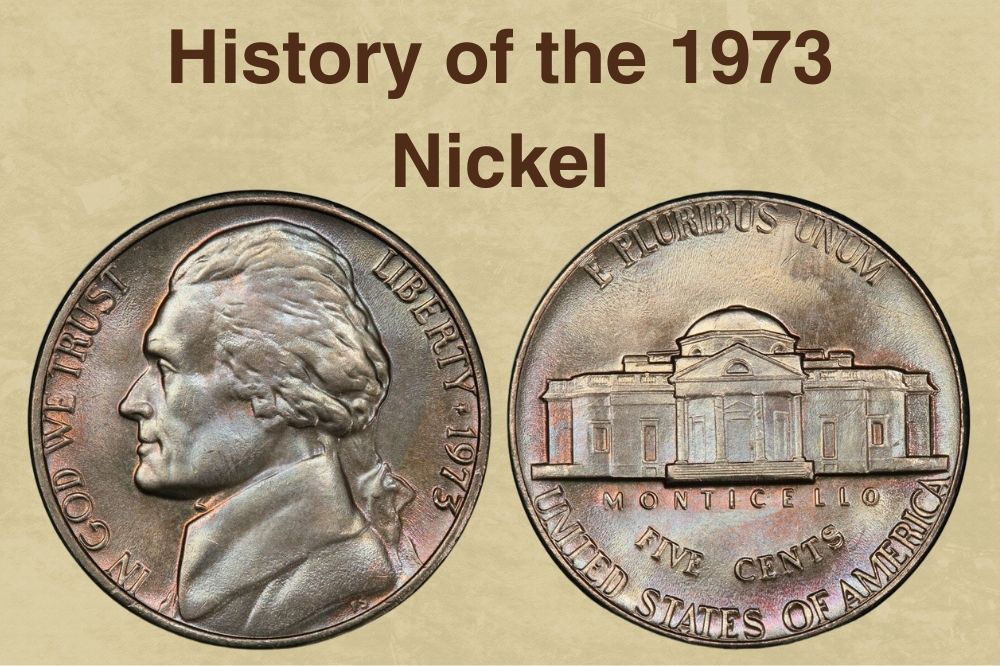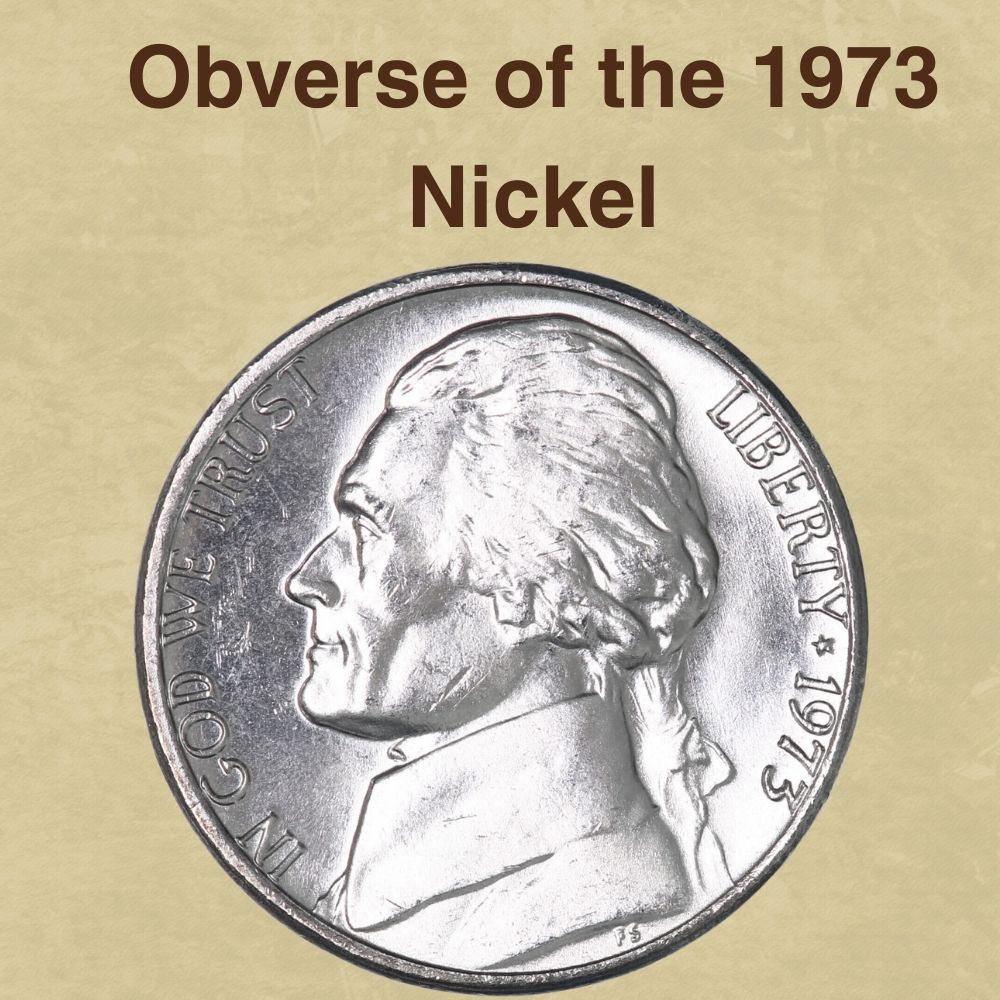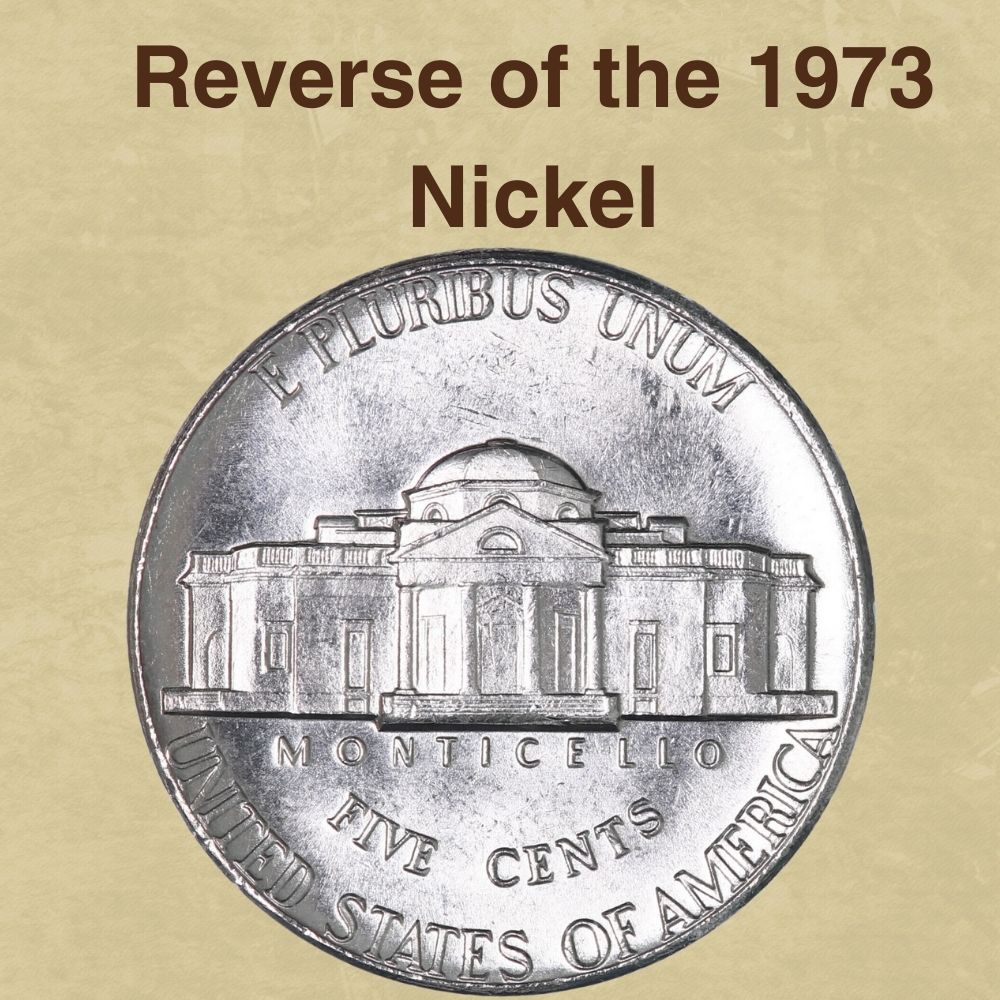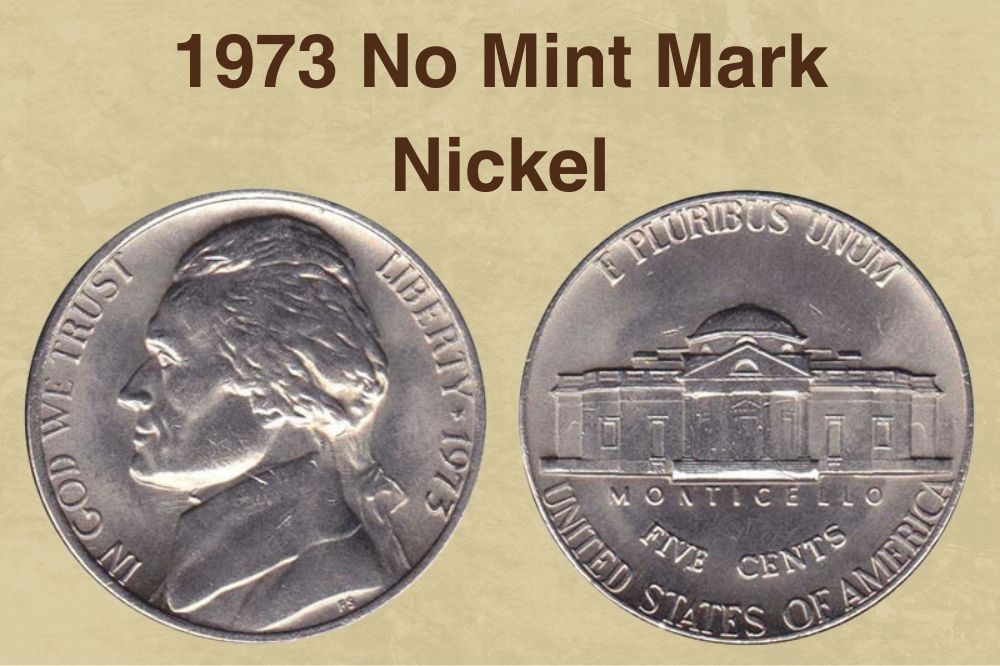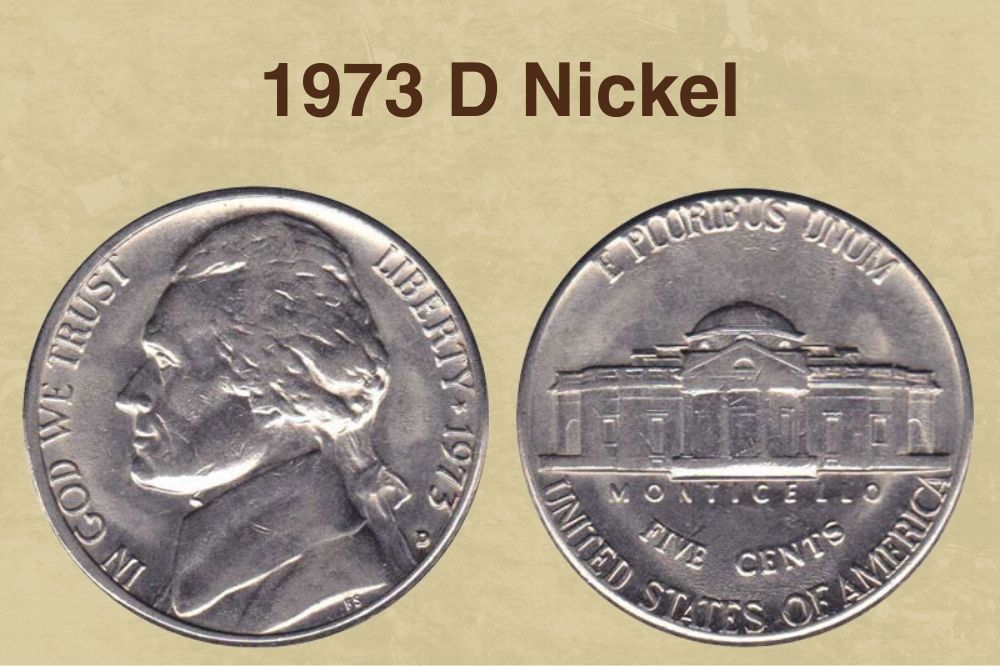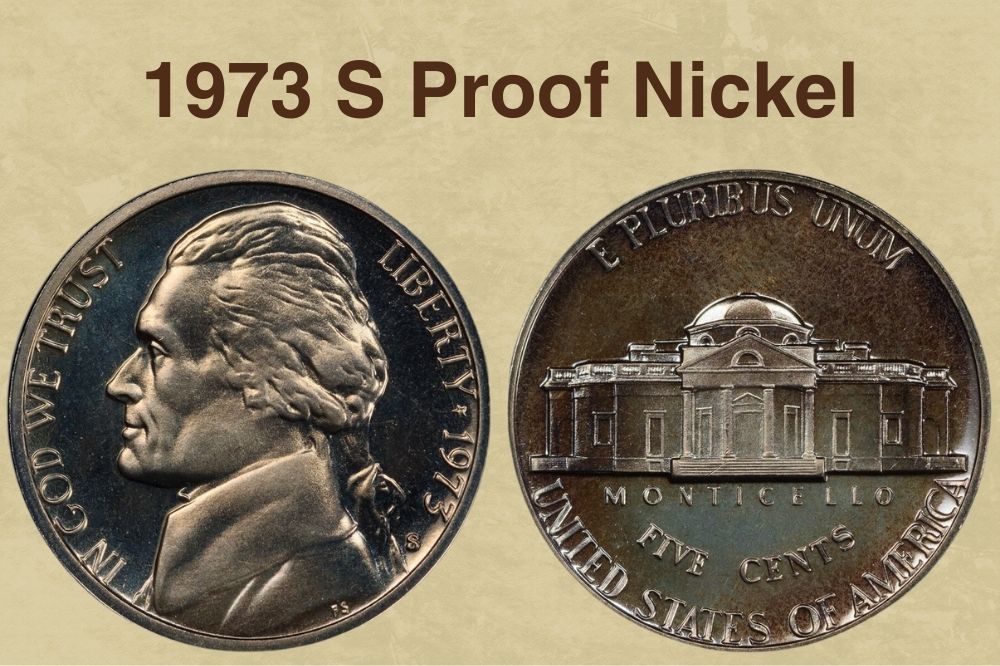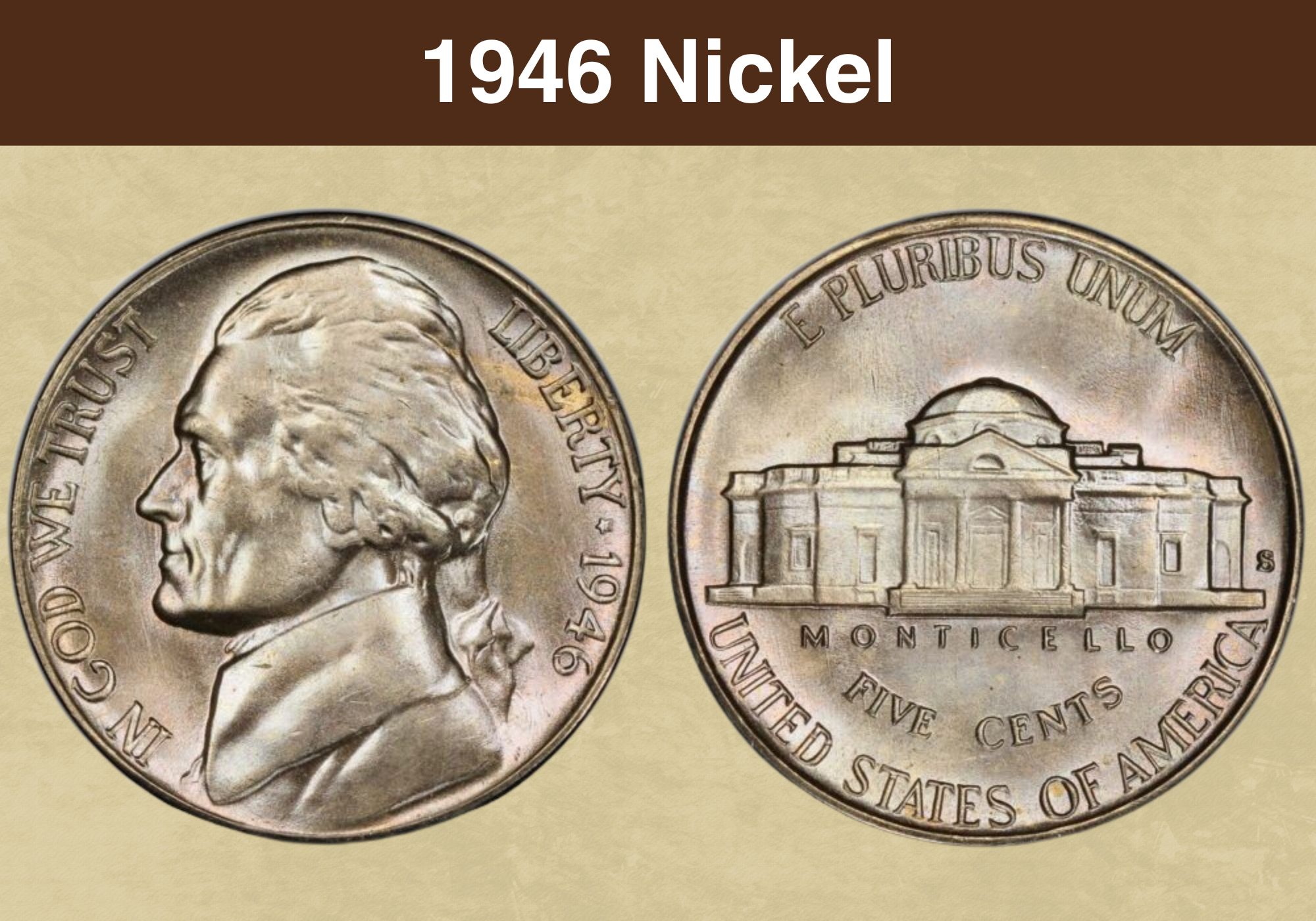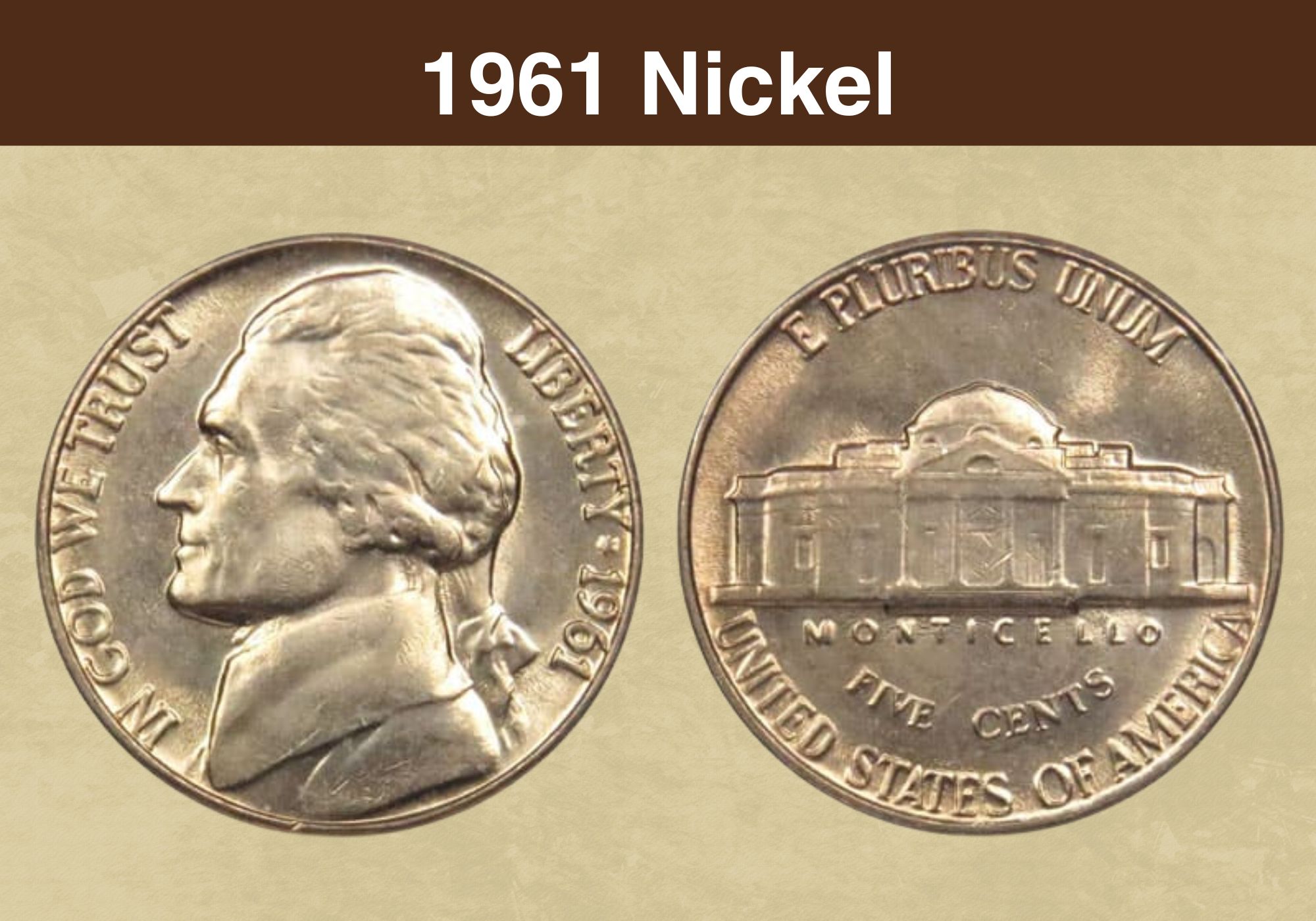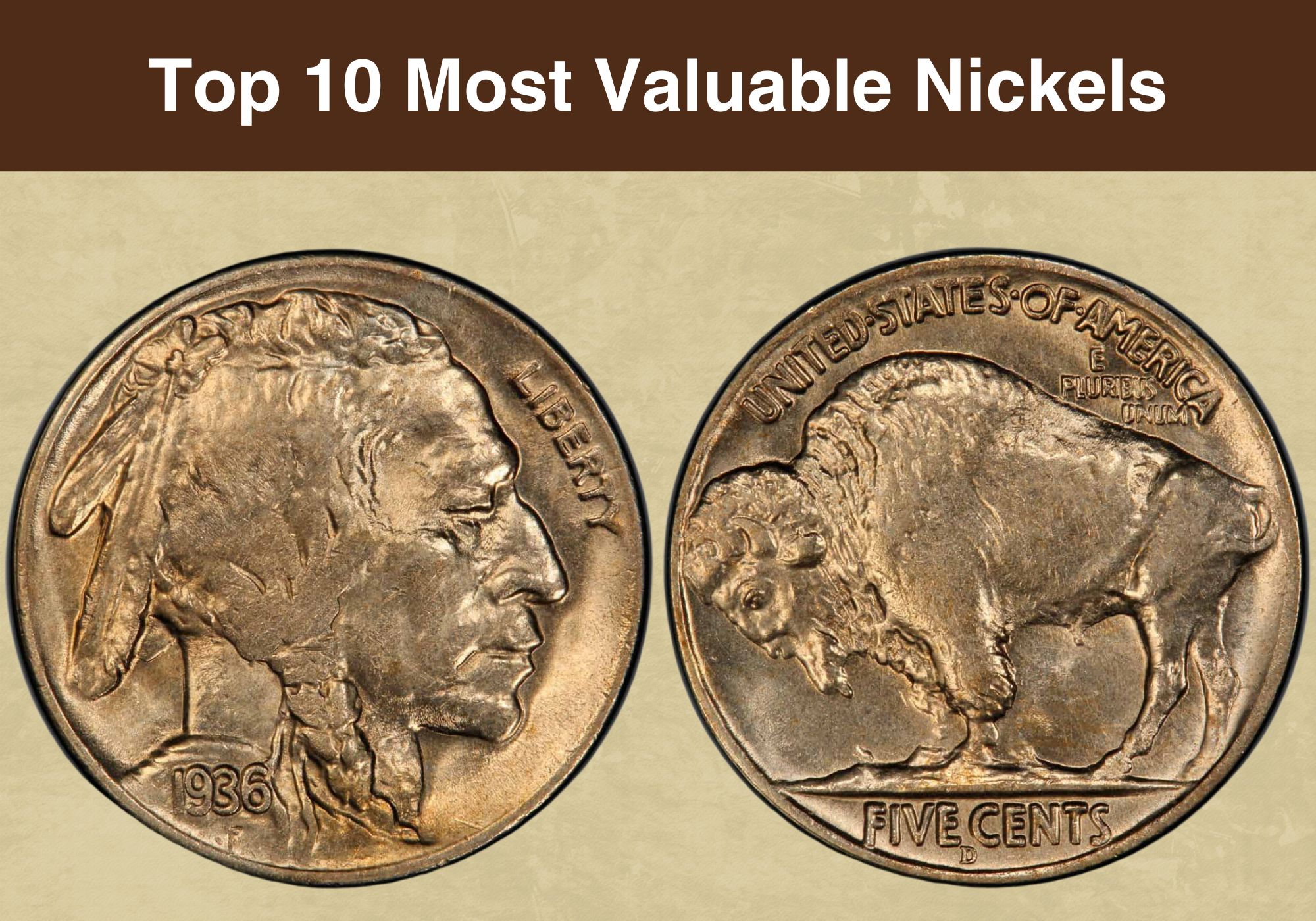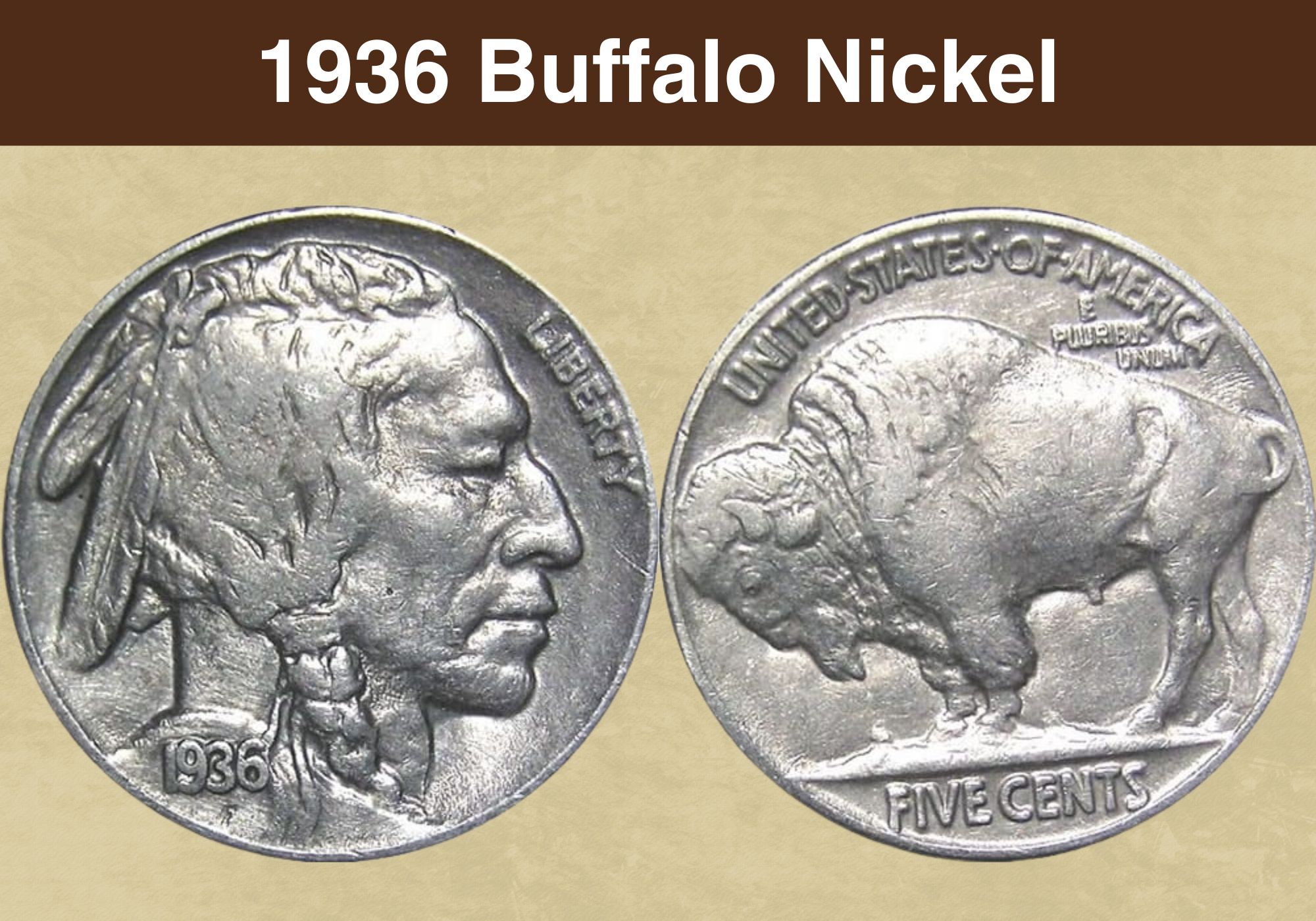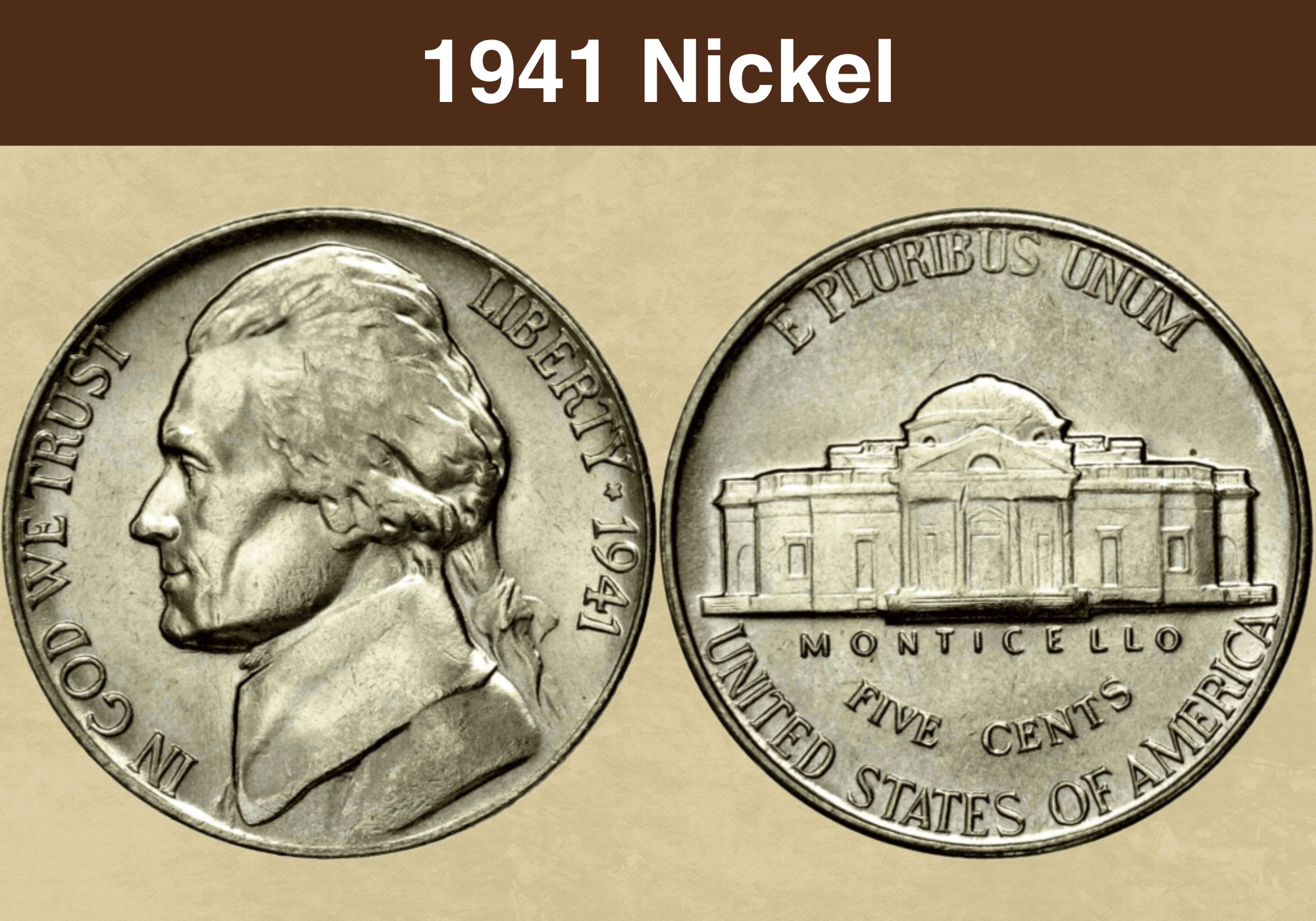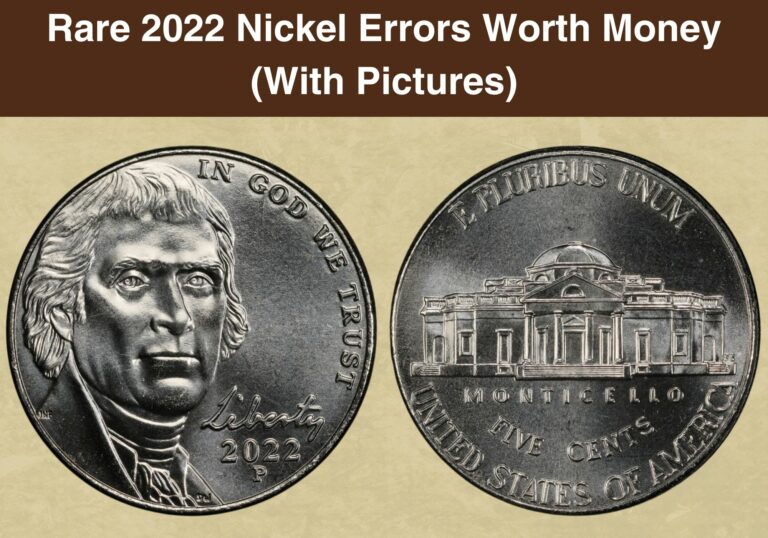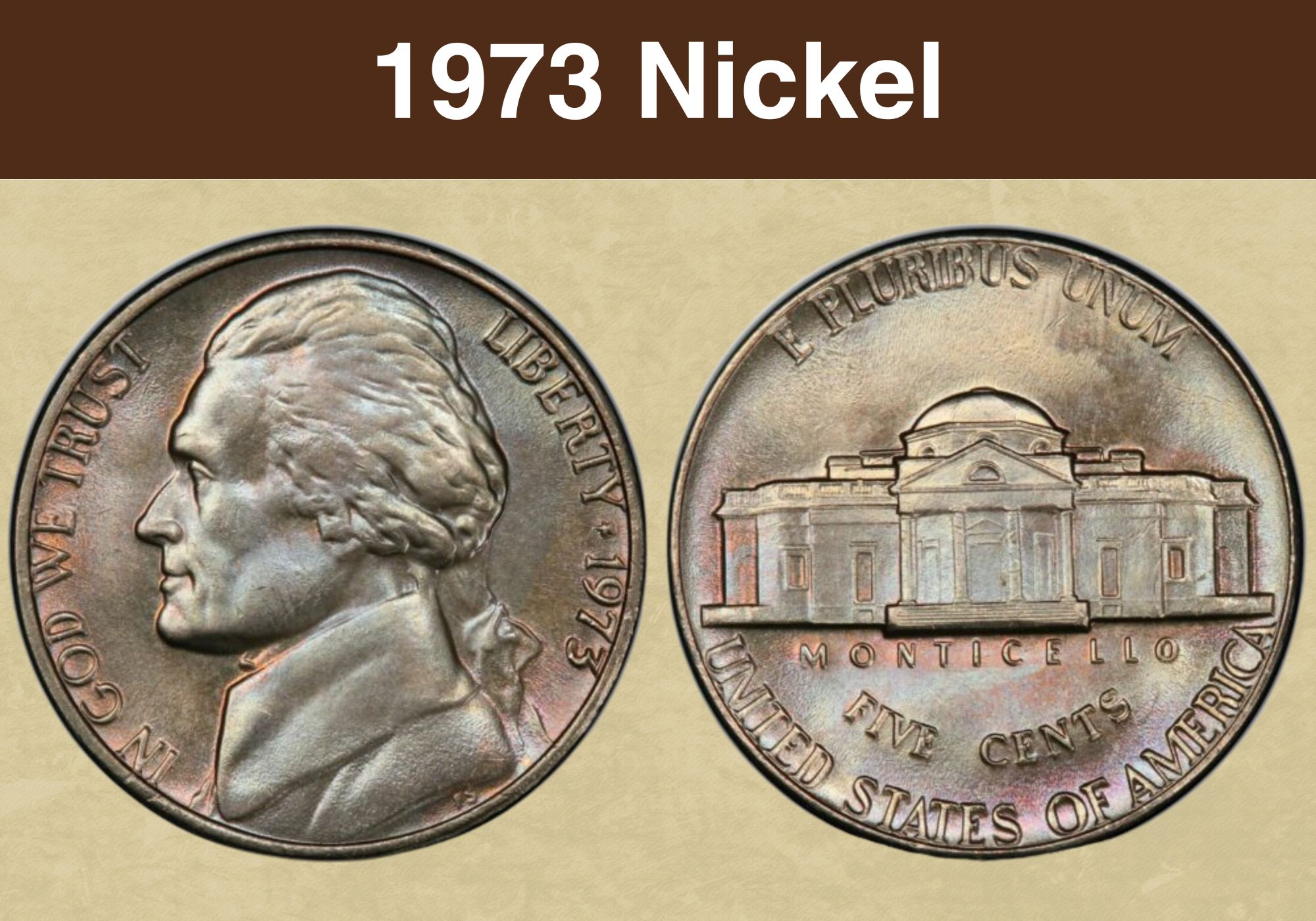
Coin Value Contents Table
Are you wondering about the 1973 nickel value? Interested in finding out what separates a normal coin from something special? Then you’ve come to the right place!
We’re going to explore everything you need to know to value your coin. We’ll discover how much a Mint error can add to the price collectors are willing to pay. And we’ll learn about the history and design of this interesting coin along the way.
Ready to get started? Then step this way!
1973 Nickel Value Chart
|
||||
| Mint Mark | XF45 | MS60 | MS65 | MS67 |
| 1973 No Mint Mark Nickel Value | $0.05 | $1
Full step: $2 |
$14
Full step: $15 |
$385
Full step: $2,750 |
| 1973 D Nickel Value | $0.05 | $1
Full step: $2 |
$12
Full step: $18 |
$300
Full step: $2,500 |
| PR60 | PR65 | PR69 | PR70 | |
| 1973 S Proof Nickel Value | Deep cameo: $3 | Deep cameo: $5 | Deep cameo: $15 | Deep cameo: $4,250 |
History of the 1973 Nickel
If your nickel bears the date 1973, it’s one of the series nicknamed the Jefferson nickel. The moniker comes from the image on the obverse – a portrait of US president and Founding Father, Thomas Jefferson.
The very first Jefferson nickels were struck back in 1938. But independent coin graders like the PCGS place the 1973 nickel in a sub-series known as “original design modern Jefferson nickels”.
That series started in 1965, the year silver was removed from a number of denominations. But the distinction is otherwise arbitrary – there’s no difference in the composition or design of earlier and “modern” Jefferson nickels.
The first of them replaced the Buffalo nickel (which actually depicted an American bison). Although the Buffalo nickel was popular, the design had proved difficult to strike cleanly.
That was probably why it was retired after 25 years. The interval was the earliest opportunity for the Mint to cease producing a design without seeking authorization from Congress.
The earliest nickels were made of 75 per cent copper and 25 per cent nickel. It’s the latter which gives them their silver color.
It’s the same recipe that’s used for nickels today. But there was a change during the Second World War, when the government needed nickel and copper for use in munitions.
Between 1942 and 1945, the coins were made using smaller quantities of copper mixed with silver and manganese. The Mint reverted to the earlier recipe in 1946.
For many years, Jefferson nickels were struck at three different Mint facilities: Philadelphia, San Francisco, and Denver. The San Francisco facility stopped producing business strike nickels in 1971, but it struck proof nickels in 1973.
Also read: Top 10 Most Valuable Nickels Worth Money
Features of the 1973 Nickel
The Obverse of the 1973 Nickel
The image of Jefferson which appears on the obverse of the 1973 nickel was the work of an artist named Felix Schlag. Schlag had been born in Germany, and had served in the German army during the First World War. He emigrated to the USA in 1929, winning a competition to design the new nickel.
His portrait shows Jefferson’s head and shoulders in profile. The President faces to the left as the coin is viewed, and wears an enigmatic smile. Just below his shoulder, you’ll see the letters “FS”, the initials of the artist.
The same portrait was used on the nickel from 1938 through to 2004. At that point, a new design for both sides of the nickel was commissioned to commemorate the Lewis and Clarke Expedition. And in 2006, the obverse was changed again, to a portrait of Jefferson by Jamie Franki.
To the left of Schlag’s Jefferson runs the motto “IN GOD WE TRUST”. To his right is the word “LIBERTY”, separated by a star from the date.
If your nickel was struck in Denver or San Francisco, it will have a mint mark. Look for a small “D” or “S” respectively. It appears just to the right of Jefferson’s hair braid.
The nickel has the motto “IN GOD WE TRUST” running along the left coin edge. On the right is the word “LIBERTY”, followed by a star and the date.
The Reverse of the 1973 Nickel
The “tails” side of the 1973 nickel features a stately looking building. It’s Monticello, the home on Jefferson’s large estate in Virginia.
Like the obverse, it’s the work of Felix Schlag. But it bears little resemblance to the design Schlag had originally proposed.
That too had depicted Monticello, but from a different – and most art historians consider more interesting – angle. Rather than being viewed from the front, Monticello was three quarters on. And a tree to the side of the house sat in the foreground.
That tree caused some debate amongst Treasury officials. They wrongly identified it as a palm, and noted that no such species could have grown in Virginia. They also felt the angle of the building was not “fitting”.
Schlag had suggested using a modern font for the lettering – but that fell foul of the Treasury officials too. They asked for a more traditional Romanesque font instead.
These changes were all made, but the result was a rather stiff and formal design. Monticello became a generic building with a portico, and a label had to be added beneath it to identify it.
Below that label, the denomination and country name appear, both curving parallel with the lower coin edge.
At the top, the Latin phrase “E PLURIBUS UNUM” arches parallel to the upper edge. It means “Out of the many, one”, a reference to the union of states.
Other Features of the 1973 Nickel
There are two types of 1973 nickels – standard coins and those with the “full step” designation. The latter are those with a good strike, with each of the steps in front of Monticello fully separated from the next by an unbroken line.
Full step nickels are worth more than standard nickels of the same grade. The designation is often abbreviated to “FS” in coin descriptions.
You can check out examples of Jefferson nickels, including some with full steps, in this Youtube video from CoinHELPu.
Also read: Top 17 Most Valuable Buffalo Nickel Worth Money
Grading of the 1973 Nickel
| # | Grade |
|---|---|
| 1 | Basal State-1 |
| 2 | Fair |
| 3 | Very Fair |
| 4, 5, 6 | Good |
| 7, 8, 10 | Very Good |
| 12, 15 | Fine |
| 20, 30 | Very Fine |
| 40 | Extremely Fine |
| 50 | About Uncirculated |
| 60 | Mint State |
| 65 | Mint State |
| 70 | Mint State |
Please check our grading guides to know your coin scale, It’s the necessary step to know the exact value of your coin.
Check out now: How to Grade Jefferson Nickel?
1973 Nickel Value Guides
1973 No Mint Mark Nickel Value
The nickels struck in Philadelphia in 1973 can be identified by the absence of a mint mark. Look at the obverse, just to the right of the bottom of Jefferson’s braid. If there’s no “D” or “S” there, your coin was made in Philly.
Over 384 million nickels were struck there that year, more than either Denver or San Francisco. And in circulated condition, they’re still easy to find today. As a result, a circulated coin won’t be worth more than its face value unless it has an interesting Mint error.
Values for uncirculated coins, however, are higher. And the better the condition of the coin, the more valuable it will be.
Coin condition is measured on a scale from 1 to 70, with 1 used being poor and 70 flawless. Uncirculated coins are graded 60 and above. And coins graded 65 or higher are known as “gems”.
For this mintage, nickels graded MS65 and above generally come from coin rolls, bags, or mint sets that never entered circulation.
A 1973 no mint mark nickel graded MS65 is worth around $14. If it’s an example with full steps, it will fetch around a dollar more.
But at the top grades, that full step designation can add a much bigger premium. A standard nickel graded MS67 is valued by the PCGS at $385. But a full step coin at the same grade – the highest to date to have been certified by the PCGS – is worth $2,750.
1973 D Nickel Value
The Denver Mint facility produced over 261 million nickels in 1973. But while the mintage is lower than the Philadelphia equivalent, there are still plenty of survivors around. That means that, at all but the best uncirculated grades, values are similar to the no mint mark coins.
In circulated condition, 1973 D nickels will usually be worth only their face value. The exceptions are coins with interesting Mint errors.
Even an uncirculated standard example graded MS60 is worth only a dollar. And values stay in single figures all the way to MS64+. The finest certified non-full step nickels from this mintage are graded MS67, and they’re valued by the PCGS at $300 apiece.
For full step 1973 D nickels, the range is from $2 at MS60 to $18 at MS65. But values accelerate rapidly beyond that level – to $90 at MS66, $250 at MS66+, and $2,500 for a best-in-class MS67.
1973 S Proof Nickel Value
1973 saw the San Francisco Mint facility striking proof nickels – coins struck with special dies on highly polished planchets. These were aimed at collectors, and the mintage was much lower than for business strike coins – 2.76 million.
But because they were always seen as collectors’ items, most were carefully stored away after purchase. And that means they’re still easy to acquire today.
Proofs are separated into three different categories – standard coins, cameos, and deep cameos. The latter two designations are awarded to coins with contrasting reflective fields and frosted devices. For a coin to be a deep cameo, the contrast must be particularly strong.
Both standard and cameo proof 1973 nickels are in abundant supply. For a coin to be worth more than a dollar, it needs to be a deep cameo. Values for those start at $3 at PR60, rising to $5 at PR65. Even a practically perfect PR69 example is worth only around $15.
But flawless PR70 deep cameos are rare. The PCGS has certified only ten coins at that level, and values each of them at $4,250.
Also read: Top 17 Most Valuable Jefferson Nickels Worth Money
Rare 1973 Nickel Errors LIST
1973 D Nickel, Struck on a Philippine 5-sentimo Planchet
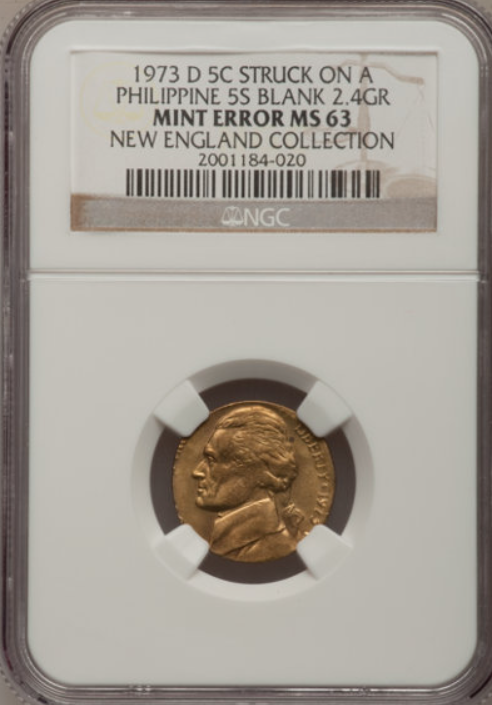
Very rarely, something other than the correct planchet makes its way into the coin press. That’s what happened with one 1973 nickel struck in Denver.
It should have been struck on the copper and nickel planchet used for all Jefferson nickels. But instead, it was struck on the planchet for a Philippine 5-sentimo coin.
As a result, it was colored gold instead of silver. And because it was much smaller, the outer parts of the design were missing.
The coin was in great condition, graded MS63 by the independent grading agency the NGC. And when it was presented for sale at auction, it made $450.
1973 D Nickel, Double Struck, Second Strike 75 Per Cent Off-center
Sometimes a planchet isn’t fully ejected from the chamber after it’s been struck. It’s then struck a second time, leaving a second imprint over the first.
And it’s often the case that the planchet has moved between the two strikes. That makes the second strike off-center. And the more dramatically off-center it is, the more interesting it is to collectors.
One of the 1973 nickels struck in Denver had exactly this error. And the second strike was a full 75 per cent off-center.
It was graded MS60 by the PCGS. And it sold at auction for $585.
Also read: 14 Most Valuable Nickel Errors Worth Money
Where to Sell Your 1973 Nickel ?
Now that you know the value of your coins, do you know where to sell those coins online easily? Don’t worry, I’ve compiled a list of these sites, including their introduction, pros, and cons.
Check out now: Best Places To Sell Coins Online (Pros & Cons)
FAQs
Which nickel is worth money?
In any series of coins, the finest quality examples are those that command the highest prices. Coins with Mint errors are also very collectible.
Amongst nickels, some of the highest prices have been achieved by Buffalo nickels. These were struck between 1913 and 1918.
The auction record goes to an over-dated 1918/7 Buffalo nickel – a coin that was the result of a hubbing error. That was graded MS65 by the PCGS, and sold at auction in 2006 for $350,750.
Is the 1970s nickel rare?
Large numbers of nickels were produced during the 1970s – hundreds of millions were produced each year.
But there are some rare coins amongst them. The very finest examples of each mintage are rare and valuable. And coins with unusual and interesting Mint errors can fetch high prices too.
Some varieties are also rare. The 1971 S nickel, for example, includes around 200 coins produced without the mint mark. The top grade for these is MS69, with 19 coins certified at that level to date. One of those achieved an auction price of $8,100 in May 2023.

